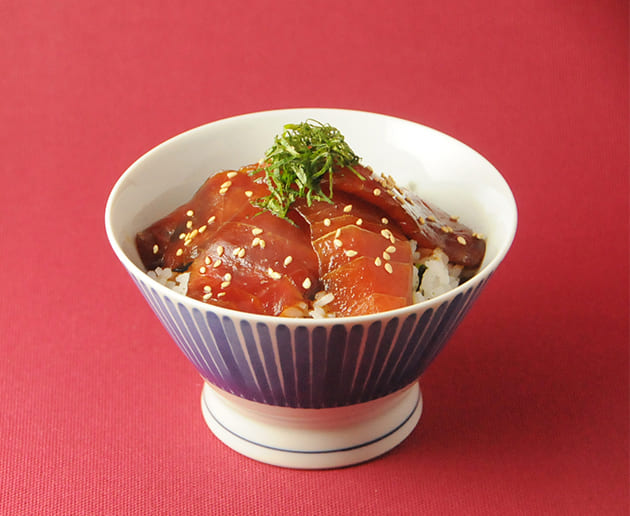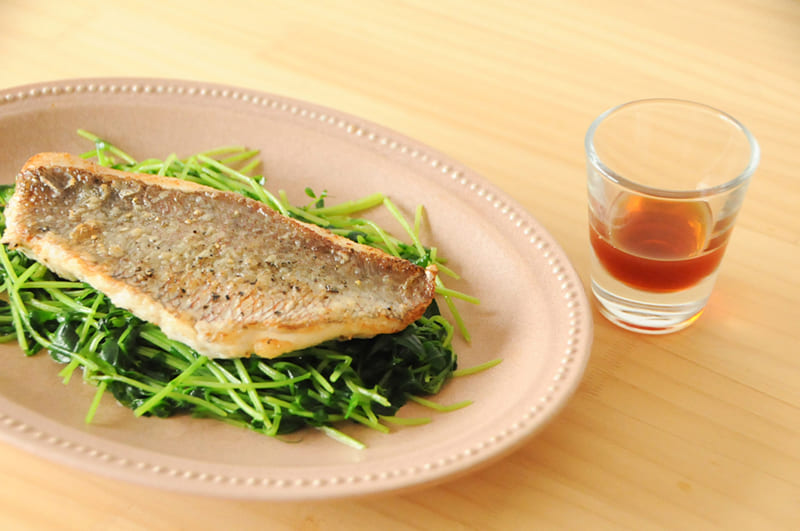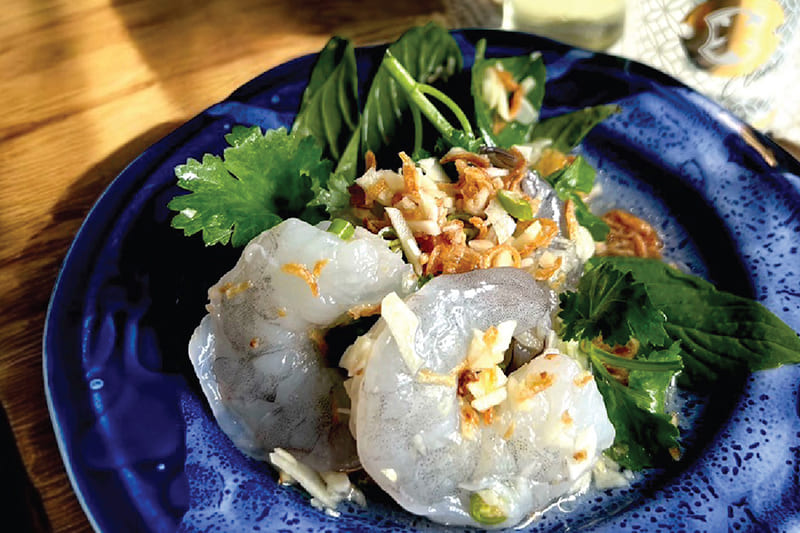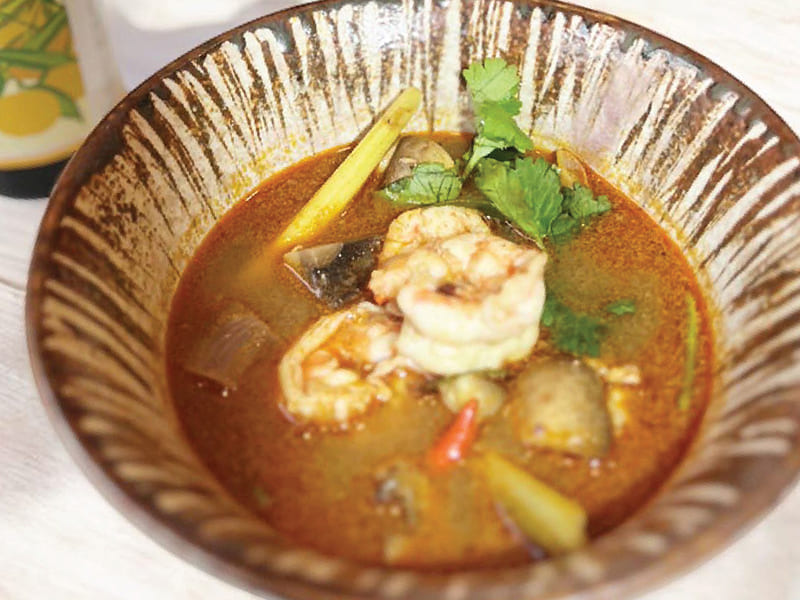CULINARY MUST-HAVE
A TASTE OF ASIA
THE EXPANSIVE WORLD OF JAPANESE SOY SAUCE
Rich in umami, this flavorful ingredient adds a unique twist to a wide variety of global cuisines
For many people worldwide, soy sauce is often just seen as that dark, savory liquid that accompanies sushi and gyoza, or serves as a seasoning to stir-fries. Yet, in Japan, a country with a deep history and culture surrounding this humble ingredient, shoyu, as the natives refer to it, is far more than just a condiment. It is a vital and refined part of a culinary heritage that dates back centuries and has evolved into a staple that enriches not only traditional dishes but also global cuisines.
From its diverse regional expressions to specialized brews, Japanese soy sauce boasts an incredible depth of flavor, aroma and versatility that continues to captivate professional chefs and home cooks alike.
The five founding flavors
Japan’s soy sauce is mainly divided into five types: koikuchi (common), usukuchi (light-colored), saishikomi (refermented), tamari (full-bodied) and shiro (pale). Each has distinct characteristics. Koikuchi is balanced and aromatic and usukuchi is lighter in color but saltier and more popular in the Kansai region. Saishikomi is intensely flavored due to its unique brewing process, tamari is thick and umami-rich, often used for glazes or finishing grilled dishes, and shiro is pale and preserves the color of the ingredients. These form the foundation of Japan’s soy sauce offerings, and each has a distinctive flavor profile and culinary role.
Beyond these core types, soy sauce has given rise to a variety of derivatives and regional variations. These include ponzu (a citrus-based soy sauce); mentsuyu (soy sauce in a dashi-based noodle soup base); and even sauces infused with kombu (kelp), garlic, or mixed with oyster essence. The southern main island of Kyushu prefers a sweeter brew, adding a blend of sugar and other sweeteners at the end of the production process.
Such variations reflect how soy sauce is far from just a single product; it can have a wide range of flavors shaped by local preferences, ingredients and taste.
Soy’s hidden powers
While the primary function of soy sauce is to provide flavor, its utility in the kitchen extends far beyond that. A splash of the koikuchi type in a hot skillet of steak, for example, not only seasons the dish, but also releases an aromatic cloud that stirs the appetite. Mixing the usukuchi type with lemon juice, however, creates a delightful sauce perfect for white fish meuniere, enhancing the delicate flesh without overshadowing it. Meanwhile, a teaspoon of shiro can elevate a wobbly chawanmushi (steamed egg custard) without compromising the smooth, golden hue of the dish.
Beyond its culinary uses, soy sauce also plays a key role in preservation. It contains compounds that help reduce or mask the raw smells of fish and meat, making it a popular choice in marinades. Its natural antimicrobial properties also made it a valuable tool in pre-refrigeration Japan, extending the serving time for seafood and vegetables, a practice that continues to this day.
A global pantry essential
Today, soy sauce continues to evolve and inspire chefs far beyond Japan. Thai chef Naree Boonyakiat, a culinary ambassador for Japanese soy sauce, showcases its versatility by incorporating it into traditional Thai recipes. Her creations, featured at international events such as the Japanese Shoyu Manufacturers Tasting & Business Matching gathering, demonstrate its transformative potential in unexpected contexts, inspiring chefs to experiment with an adaptable condiment that seems to integrate effortlessly with all culinary traditions.
These dishes are also a testament to the fact that Japanese soy sauce is not merely a local flavoring, but an indispensable condiment that lends its complexity and elegance to cuisine worldwide.
To appreciate the complexity and versatility of Japan’s soy sauce, it is best to experiment with different types and incorporate them into various dishes. Summarized below are five cooking ideas for dishes that showcase the unique characteristics of each type, allowing people to explore how shoyu interacts with different ingredients and textures. Three of the ideas are from Shokunin Shoyu’s website and two from Boonyakiat.
Soy-marinated tuna bowl
For this dish, mirin and sake are briefly brought to a boil to reduce the alcohol, then seasoned with koikuchi shoyu. Once cooled, slices of sashimi-grade tuna or salmon (if tuna is unavailable) are marinated in the sauce.
After a few minutes, the marinated fish is layered over a bowl of freshly cooked rice. The soy sauce gently marinates the fish, infusing it with umami and resulting in a glossy, flavorful finish. Furthermore, its richness complements the fatty texture of the fish, transforming leftover sashimi cuts or cheap tuna into a luxurious dish.

SHOKUNIN SHOYU
Sea bream meuniere
This simple and refreshing recipe features spring-to-early-summer sea bream meuniere, lightly coated in flour and pan-fried in butter until golden brown.
The fish is paired with a light sauce of lemon and usukuchi shoyu in equal parts, which enhances the natural umami of the white fish without overpowering its delicate flavor. Lightly sauteed pea shoots are served on the side, allowing their fresh flavor to shine. It’s an elegant way to enjoy seasonal seafood without overpowering its subtle taste.

SHOKUNIN SHOYU
Tomato soy sauce
This smooth tomato sauce brings a savory twist to any barbecue, thanks to the rich depth of saishikomi shoyu.
The sauce features sauteed garlic, chili peppers, canned tomatoes and extras, such as chickpeas. The simple seasoning of salt, pepper and a dash of saishikomi results in a well-balanced mix of tangy, savory and smooth. Perfect with grilled vegetables, skewered meats or burgers, this quick and easy sauce delivers bold flavors with minimal effort.

ADOBE STOCK
Raw shrimp with soy-wasabi sauce
Boonyakiat’s refreshing appetizer highlights the delicate texture of raw shrimp, complemented by a zesty and aromatic dressing.
This dish sees deveined and cleaned shrimp on a plate topped with a vibrant dressing of lime juice, bird’s eye chili, garlic, clear soy sauce and wasabi oil. Garnished with crispy shallots and fresh herbs, it achieves a perfect balance of heat, acidity and umami without overpowering the shrimp. It can be served chilled for a lively start to any meal.

CHEF NAREE BOONYAKIAT
Tom yum goong with yuzu shoyu
This bright twist by Boonyakiat to the classic tom yum goong recipe basically blends bold Thai aromatics with the citrusy elegance of Japanese yuzu soy sauce, which adds depth and umami by replacing some of the lime juice and fish sauce traditionally used in the dish.
The result is a smoother, more balanced flavor profile with a layered tanginess that complements the heat from the Thai chili paste.
First the stock is brought to a boil, before galangal, lemongrass, kaffir lime leaves and crushed chili peppers are added. Mushrooms and prawns are added and simmered until the prawns are cooked through. The chili paste, lime juice and yuzu shoyu provide a tangy, flavorful finish, and a few drops of fish sauce can be added as desired. Served hot with a handful of fresh coriander leaves, this warm, spicy and refreshing soup represents a fusion of two culinary traditions.

CHEF NAREE BOONYAKIAT
Innovation built on tradition
Soy sauce is a cornerstone of Japanese cuisine, deeply ingrained in the country’s culture and culinary traditions. It brings balance to a variety of flavors — saltiness, sweetness, acidity, bitterness and umami — making it indispensable in both home and professional kitchens.
What’s truly remarkable about soy sauce is its ability to remain grounded in tradition, even as it evolves.
Across Japan, small, family-owned breweries continue to produce soy sauce using time-honored methods passed down through generations. Each bottle reflects its region’s unique climate and the expertise of its makers, offering a personal touch in every drop. At the same time, brewers are developing innovative varieties by pushing boundaries while honoring tradition, resulting in a diverse range of sauces from classic to contemporary.
In the rapidly changing world of cuisine, soy sauce endures both as a condiment and a cultural ambassador, with shoyu representing the culinary wisdom of Japan. Whether used in traditional recipes or innovative creations, shoyu brings depth and flavor to dishes around the world. More than just a dip, it’s something to explore, adding character to every kitchen it touches.











